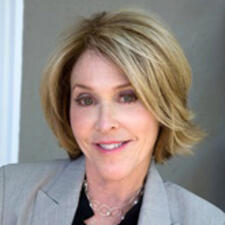
Daycare can be a brutal start for some of our society’s youngest and most vulnerable people.
A University of California, Riverside, study found that 16% of autistic children – roughly one in six – are expelled from preschool programs, with the average age of rejected children being only 3.3 years old. The consequences for these children were chilling. Once they entered kindergarten, previously expelled children faced more conflict with and dependency on their teachers, among other difficulties, the study found.
“It's shocking,” said the study’s lead author, Jan Blacher, a distinguished research professor both in the UC Riverside School of Education and in the UCLA Department of Psychology. “These little kids were asked to leave school because they demonstrated behaviors directly related to their autism. So, they were being expelled from preschool for the very problems that they needed school for.”
Autism characteristics, including difficulty with social communication and some repetitive behaviors, can be misinterpreted as forms of misbehavior, making autistic children more vulnerable to expulsions, the researchers found. Additionally, teachers may miss children’s non-verbal attempts to communicate their needs, which heightens children’s anxiety and can result in temper tantrums at such a young age.
“These are very young children who have no idea why they are being asked to leave school. And it leaves the kids in kind of a quandary,” Blacher said.
Blacher and her co-author, Abbey Eisenhower, a professor at the University of Massachusetts-Boston in the Department of Psychology, based their findings pertaining to expulsion on reports by parents of 203 autistic children. Their paper, “Preschool and Child-Care Expulsion: Is it Elevated for Autistic Children?,” was published in the journal Exceptional Children.
The autistic children were overwhelmingly expelled for behavioral issues.
“Teachers saw them as a problem but didn't understand that the problem was indicative of a disability, or something more systemic, that actually needed to be dealt with,” Blacher said.
“Many of the expelled children were not identified as having a special need. That suggests to us that it never occurred to the teachers to refer them for assessment. So, part of it is a lack of teacher awareness of the prevalence of autism, and how it manifests in a very young age. Had they understood autism, they might have been inspired to deal with it, and say, ‘Maybe I should have this child assessed.’”
Blacher and Eisenhower also found expulsion rates were higher at privately owned daycare centers, suggesting a greater need for policies and practices supporting inclusion in private settings.
Their alarming finding on daycare expulsions stemmed from a larger project, called Smooth Sailing, funded by a $1.4 million grant from the Institute of Education Science to develop methods to improve the education of preschool and early grade autistic children. They have since conducted a pilot study (a randomized controlled trial) of a new autism-affirming intervention to help teachers better understand and help children with autism in general education classes. This work will be published in a forthcoming paper.
Blacher and Eisenhower are seeking additional funding for their Smooth Sailing inventions to be adopted by preschool and early childhood educators. Such interventions forge better relations between autistic students and their teachers, Blacher said.
“Kids who have good relationships with their teachers in early childhood settings do better academically, socially, and emotionally. They are less likely to be asked to leave school, and in high school, they are more likely to get better grades and graduate.”




